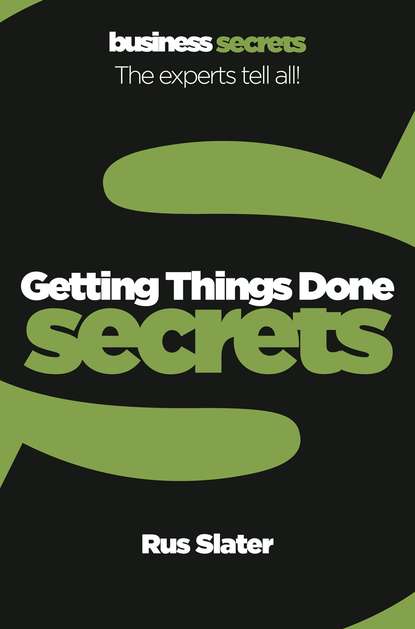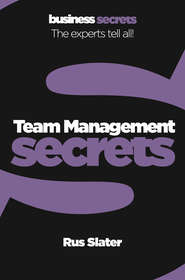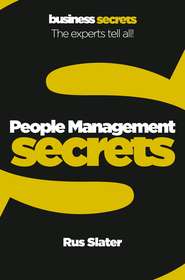По всем вопросам обращайтесь на: info@litportal.ru
(©) 2003-2024.
✖
Getting Things Done
Автор
Год написания книги
2019
Настройки чтения
Размер шрифта
Высота строк
Поля
Most of us are simply grateful to have a decent job and a wage packet at the end of each week or month, but we also need to have a vision of where we want to be in the future. You may want to carve out a long-term career with your current employer or you may want to set up your own business in the future, but the most important thing is to know what you want out of life.
Visualize yourself at the age 50 or 60 years.
• How respected are you?
• Where do you live and work?
• What kind of family life do you have?
• What do you do for fun?
“If you don’t know where you are going, any road will get you there” Lewis Carroll, English author
Deciding the answers to these questions will help you to define the type of job you work in today and next year in order to get to where you want to be. Many people find it really helpful to write out their vision, either like an essay or a series of bullet points.
What medium-term actions are relevant to achieving your long-term career goals?
You now have to ensure that everything you do is relevant to you in your current and next job. Especially if you are working at a junior level, assess each instruction to ensure that it is within the job description of your current job. You are assessed against your job description, so doing things that aren’t covered in your job description is like spending time asleep, unless…a task is clearly proving your ability to be promoted to the next job up! If you are working at a more senior level, ask yourself if you are getting all the right things done, or could you be prioritizing or delegating more efficiently? Are you genuinely working each day to achieve your long-term career goals?
Look at Secret 1.4 as well since it looks in more depth at the short-term aspect of your current job.
Write down your long-term career goals and what you need to do in the medium term to achieve them.
1.9 Know WIIFM (#ulink_9ad09043-8215-5195-8ff0-82e54c5a649c)
The mnemonic WIIFM stands for What’s In It For Me? It may sound selfish, but in terms of getting things done, WIIFM is important because it can provide you with a motivation to want to do something, as opposed to doing something simply because you think you have to do it.
It may seem odd to be talking about having to find out “what’s in it for me”, but the reality is that every job has its good bits and its bad bits: things that we like doing and things that we hate doing. Usually the WIIFM good bits of a job are fairly easy to find:
• I enjoy it.
• I find it easy.
• It makes me look good/feel good.
• It moves me closer to promotion.
one minute wonder WIIFMS are very rarely about financial reward, so think outside the money-box!
“Work spares us from three evils: boredom, vice and need” Voltaire, French Enlightenment writer
Finding the WIIFM factor in the bad bits of the job is often more difficult. However, if we can identify the WIIFM it helps motivate us to do the bad bits properly and quickly.
You may find the WIIFM in one of two areas of the bad bits of your job.
Positive WIIFMs such as:
• I don’t enjoy it but it makes me look good.
• I don’t enjoy it but it brings me closer to promotion.
• I’m not very good at it but by doing it I get better.
Nastiness avoidance WIIFMS such as:
• Once I’ve done it, it is out of the way for another month/quarter/year.
• If I can get it done the boss will stop hassling me to do it.
• As soon as it is out of the way I can stop worrying about it.
• If I do this then I’m safe from the authorities/criticism.
If you can find the “what’s in it for me?” factor you can motivate yourself to do almost anything.
1.10 Make ‘to do’ lists (#ulink_c33d3b19-a8fb-5396-98df-cba3f26cc84b)
Some people love ‘to do’ lists and others hate them! What cannot be denied is that ‘to do’ lists help you to remember what it is that you need to do, and the more tasks you have to do, the more valuable the list.
• List all tasks. List the one-off things as well as listing any everyday, weekly or monthly tasks.
• Break down the tasks. Write as much detail as you can. This gives you a better chance of accurately estimating the time each task will take. For example, if you have to move to another workstation, break it down into the individual tasks:
• Pack boxes
• Disconnect pc & phone
• Move desk
• Move chair and filing cabinet
• Move pc & phone
one minute wonder Many software programs and even mobile phones nowadays have a ‘to do’ list function (sometimes called a ‘task’ list). These are generally nothing more sophisticated than the type of paper list recommended here.
Вы ознакомились с фрагментом книги.
Приобретайте полный текст книги у нашего партнера:
Приобретайте полный текст книги у нашего партнера:







